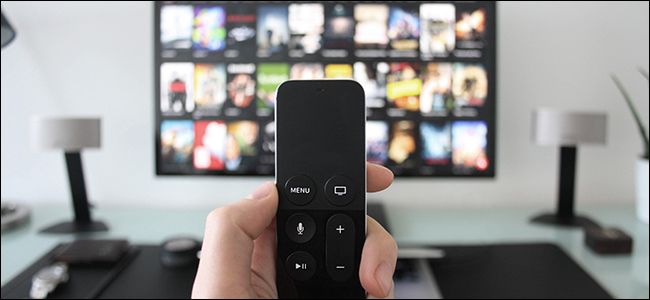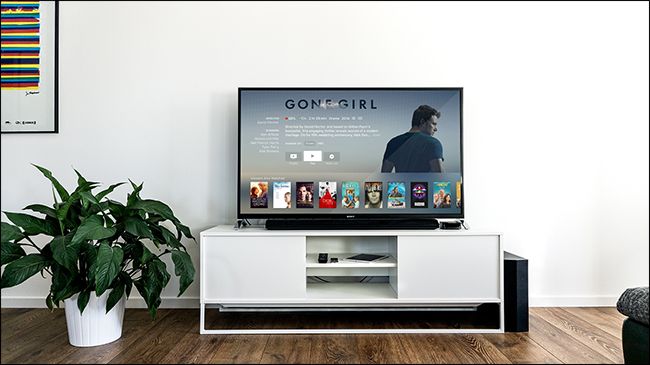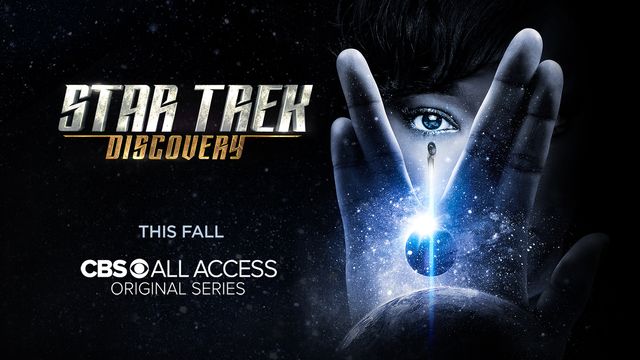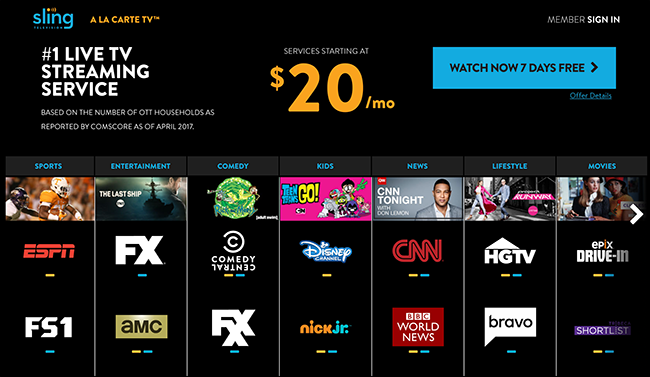Quick Links
The cord cutting pushback has begun. Wired, The LA Times and even my own colleagues have all argued that cutting the cord is starting to lose its luster, and that as more companies break off into their own streaming services (instead of putting their content up on Netflix), cord cutting will soon be just as expensive as cable.
These articles are technically correct. But they also miss the point a bit: paying for all those services isn't the only way to cut the cord.
Yes, it's true that subscribing to Netflix, Hulu, Sling TV, Amazon Prime, and HBO Go will add up to roughly as much as a cable bundle. It's also true that companies keep creating new streaming services like CBS All Access and Disney's upcoming venture, all in the hopes of extracting even more money from those without cable.
But paying for all of those services isn't cord cutting: it's just cable by another name. Cord cutting was never going to fit everyone, and if you're the sort of person who wants access to every show as soon as it airs, the cable bundle probably serves you well. The same goes for sports fans. Enjoy your bundle.
But if you're not that sort of person, cord cutting lets you decide what entertainment is and isn't worth paying for in a way no cable company offers. Satisfied with watching whatever is on Netflix? $10 a month and you're done. Want more? Throw in Hulu or Amazon Prime, and you still have a ton of content for a fraction of what cable costs.
You have control now, in a way that wasn't true five years ago. That control is prompting hundreds of thousands to drop cable, and it's not going to stop. Choice is attractive.
You Don't Need Everything
The problem with most anti-cord-cutting polemics is they assume every customer wants everything they had with cable, just online and with a cheaper price tag. That's simply not the case.
If you're the sort of customer who wants to watch Game of Thrones, The Walking Dead, and Rick and Morty as soon as new episodes air, cord cutting might not be for you. Sure, you might be able to put together an Internet-only way to watch all of these things right away, and it might work out to be cheaper than a conventional cable package. If so, lucky you.
But cord cutting's main appeal isn't for people who absolutely need to watch the latest thing right away. The big appeal is for people who occasionally want something to watch, and are tired of paying $100 a month to do that. Those are the people cutting cable quickly, and that trend isn't going to stop.
You Can Rotate Services In And Out
It really sucks that CBS is locking Star Trek Discovery away in a service with absolutely nothing else I'm interested in watching. I caught the premiere on CBS and am cautiously optimistic, but I'm not going to pay $10 a month in perpetuity to watch this one show once a week.
What I might do, assuming the reviews are good, is wait until the first season is available, pay $10 for a month's service, and binge watch the season before that month expires. Then I'll end my subscription.
That's the kind of flexibility you have in the cord cutting marketplace. It's also the kind of flexibility that was impossible before it.
Sure, I have to actively keep track of which services offer which shows, which isn't exactly fun, but the point is to only spend money on things I actually want. Traditional cable bundles didn't give me that. The current system still doesn't, but it's a heck of a lot closer.
This Just In: Antennas Still Exist
Local channels are a common complaint about cord cutting, which makes no freaking sense. You can get local channels for free using a simple HD antenna, and most of the time the picture is better than cable. ABC, CBS, FOX, NBC, PBS, The CW---they're all available to you free of charge, with a bunch of secondary channels to boot.
With a little tech knowledge you can even record shows on your PC using a TV tuner and NextPVR, which can then stream to any device in your house. The less technologically savvy can get this with devices like the HDHomeRun.
This isn't a trick, or piracy---local stations have always been free. I don't know why cable companies charge so much for them, but you can work around that easily enough. Which is kind of the point of cord cutting: avoiding unnecessary expenses.
TV Channels Are Obsolete
Sling TV lets you watch TV in your browser, with plans starting at $20 a month. This is not the future of TV: it's the equivalent of adding a rotary phone dial to a touch screen. Technically possible, sure, but ultimately pointless.
That's because Sling TV, and similar services, are oriented around an archaic concept: TV channels. This concept, which dates back to the early days of broadcasting, shows you whatever is "on" right now instead of the show you actually want to watch. It also typically shows you advertisements at a regular interval, even though you're already paying for the service.
Explain this to five year olds accustomed to binging their favorite shows on Netflix, and they'll stare at you blankly. It sounds like just the dumbest thing to them...because it is.
Yet Sling and similar services try to keep this legacy concept alive, papering over the obvious inconvenience with abstract concepts like a "cloud PVR." They do this not because it's the best design choice for watching things in 2017, but because TV channels have the rights to broadcast specific things, choose to broadcast them at specific times, and do not want to offer that content in more convenient on-demand interface to people unwilling to pay for the channels.
I'm not saying no one should pay for these services: in the short term, they fill a hole in the ecosystem, giving you access to content. And if you want access to nationally broadcast sporting events without cable, they're usually the best option.
But they're not cord cutting; at least, not really. They're a hack, offering legacy content in a somewhat modern form. It's the TV equivalent of a PDF newspaper subscription: it works, sure, but feels unnecessarily tied to the old medium's constraints. You can't use it without feeling like there must be a better way.
Still, they're an option, and they often offer bundles at lower price points than cable will bother with. It's another choice in your arsenal, and requires way less commitment than cable. Grab it for a month during the Olympics, then kick it to the curb: it's more flexibility than you had before.
Sports Are a Problem, But That's Okay for Lots of People
If you're a sports fan you've benefited from the cable bundle. Channels like ESPN make up a high percentage of bundle prices, and the massive number of subscribers who don't care about sports are subsidizing the sports fans.
At least, they were. Non-sports fans are the group most likely to ditch cable, and for good reason: they were the group mostly likely to be paying for things they didn't care about.
Which makes it kind of ironic how many articles about cord cutting complain about the sports situation. People have been cutting the cord precisely because they're tired of paying for sports, so of course the services catering to cord cutters aren't going to be a great deal for sports fans.
I'm a dedicated cord cutter, and I'll admit it: sports are a mess without cable. You can try to put something together with Sling TV and the various league-specific services, but odds are you won't save much money.
But avoiding paying for sports is the main way cord cutters save money, so of course sports fans aren't going to save money by ditching cable. This may change later, but in the short term, this seems like the lynchpin that determines the audience for cord cutting.
There's So Much Entertainment Out There
Once upon a time, TV was the main way to entertain yourself at home. These days we've got video games to play, web sites to read, and social media to post in. And there's an awful lot of free video content on YouTube, too. We're all spending less time watching TV than ten years ago, and that's only going to continue. So it makes sense the people are looking for ways to pay less for TV: they use it less.
Cord cutting means finding your own compromise. I myself have an antenna for local channels, which I record using NextPVR. I watch hockey online using NHL.tv. And I've got Netflix for when when there's nothing specifically I want to watch. It's not a setup I'd recommend for everyone, but it keeps me in enough TV that I don't get bored.
And that's what this is about: finding something that works for you. If you want to watch everything right away, that thing might be the cable bundle. For everyone else, cord cutting can be great. The ongoing decline in cable subscribtions suggests lots of people are working that out.
Photo Credits: Julian O Hayon, Jens Kreuter, Jake weirick






